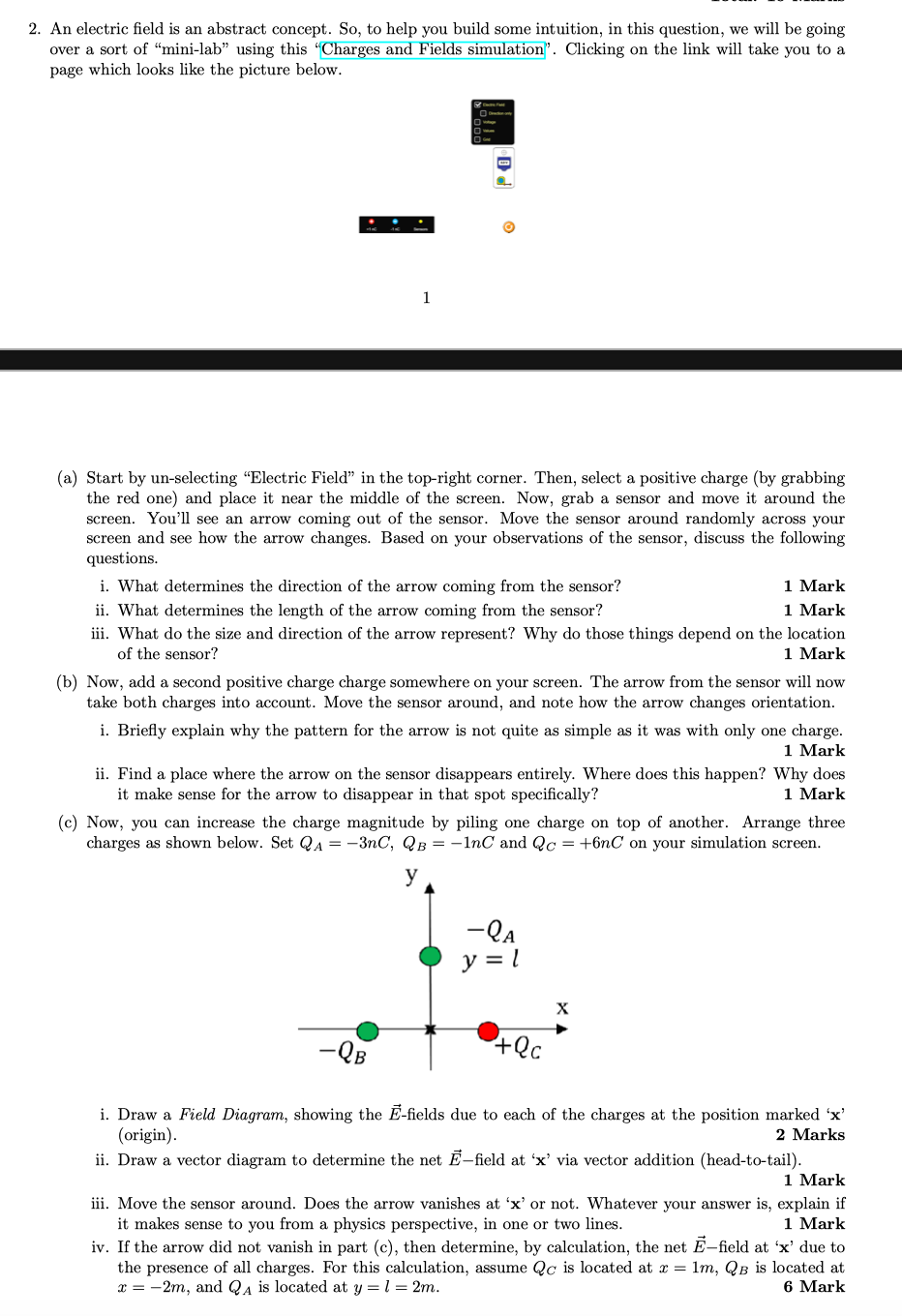Answered step by step
Verified Expert Solution
Question
1 Approved Answer
2. An electric field is an abstract concept. So, to help you build some intuition, in this question, we will be going over a

2. An electric field is an abstract concept. So, to help you build some intuition, in this question, we will be going over a sort of "mini-lab" using this "Charges and Fields simulation". Clicking on the link will take you to a page which looks like the picture below. 1 Bd (a) Start by un-selecting "Electric Field" in the top-right corner. Then, select a positive charge (by grabbing the red one) and place it near the middle of the screen. Now, grab a sensor and move it around the screen. You'll see an arrow coming out of the sensor. Move the sensor around randomly across your screen and see how the arrow changes. Based on your observations of the sensor, discuss the following questions. 1 Mark 1 Mark i. What determines the direction of the arrow coming from the sensor? ii. What determines the length of the arrow coming from the sensor? iii. What do the size and direction of the arrow represent? Why do those things depend on the location of the sensor? 1 Mark (b) Now, add a second positive charge charge somewhere on your screen. The arrow from the sensor will now take both charges into account. Move the sensor around, and note how the arrow changes orientation. i. Briefly explain why the pattern for the arrow is not quite as simple as it was with only one charge. 1 Mark ii. Find a place where the arrow on the sensor disappears entirely. Where does this happen? Why does it make sense for the arrow to disappear in that spot specifically? 1 Mark (c) Now, you can increase the charge magnitude by piling one charge on top of another. Arrange three charges as shown below. Set QA = -3nC, QB = -1nC and Qc = +6nC on your simulation screen. y -QA y = 1 -QB +Qc i. Draw a Field Diagram, showing the -fields due to each of the charges at the position marked x (origin). 2 Marks ii. Draw a vector diagram to determine the net -field at 'x' via vector addition (head-to-tail). 1 Mark iii. Move the sensor around. Does the arrow vanishes at 'x' or not. Whatever your answer is, explain if it makes sense to you from a physics perspective, in one or two lines. 1 Mark iv. If the arrow did not vanish in part (c), then determine, by calculation, the net -field at 'x' due to the presence of all charges. For this calculation, assume Qc is located at x = 1m, QB is located at x=-2m, and QA is located at y = 1 = 2m. 6 Mark
Step by Step Solution
There are 3 Steps involved in it
Step: 1

Get Instant Access to Expert-Tailored Solutions
See step-by-step solutions with expert insights and AI powered tools for academic success
Step: 2

Step: 3

Ace Your Homework with AI
Get the answers you need in no time with our AI-driven, step-by-step assistance
Get Started


